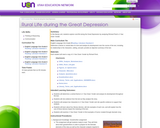
In this literary unit, students explore rural life during the Great Depression by analyzing Richard Peck's A Year Down Yonder.
- Subject:
- Fine Arts
- Material Type:
- Lesson Plan
- Provider:
- Utah Education Network
- Date Added:
- 10/10/2017

In this literary unit, students explore rural life during the Great Depression by analyzing Richard Peck's A Year Down Yonder.
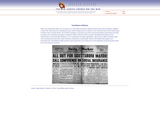
When nine young black males, one as young as 12, were falsely accused of raping two white women near Scottsboro, Alabama, in 1931, their case became an international cause celebre largely due to the activism of the Communist Party of the United States (CPUSA). Here, the Daily Worker, the CPUSA's newspaper, announces one of the many demonstrations sponsored by the Party in support of the Scottsboro defendants. Despite the efforts of first the CPUSA and later the National Association for the Advancement of Colored People (NAACP), a more mainstream civil rights organization, eight of the so called Scottsboro Boys" were convicted and sentenced to death following a trial based on questionable evidence and riddled with prejudice and procedural error. Eventually the death sentences were overturned

Father Charles Coughlin occupied both a strange and a familiar place in American politics during the 1930s. Politically radical, a passionate democrat, he nevertheless was a bigot who freely vented angry, irrational charges and assertions. A Catholic priest, he broadcast weekly radio sermons that by 1930 drew as many as forty-five million listeners. By the mid-1930s, Coughlin's growing extremism, his increasing determination to cast political problems in terms of free-floating conspiracy, and his persistent attacks on a popular president, Franklin D. Roosevelt, made many of his fellow Catholics nervous. John Ryan, a fellow Catholic priest, had long been active as a social reformer and university educator. In a September 1936 radio speech, he denounced Coughlin for his attacks on FDR. Ryan's address provoked a host of letters; these three typical letters to Ryan reflected the character of Coughlin's devoted support and the capitulation to hatred that characterized Coughlin's movement in the late 1930s.

The U.S. government rarely used the word propaganda during World War II when referring to its extensive use of radio, film, newspapers, posters, and leaflets to bolster public support for the war effort. It preferred, instead, terms like "education and information," "psychological warfare," or "morale building." Under whatever rubric, U.S. government media production during World War II was a massive and expensive undertaking. Politicians, public relations experts, and social scientists increasingly heralded film as the ideal medium for domestic propaganda, especially because of the increasing number of sixteen-millimeter projectors in schools, civic centers, and military training facilities. In a 1942 memo on film and propaganda, Eric Knight, a writer in the U.S. army's Morale Branch, argued that "shaping the mental and moral forces on the home front" was as important as, if not more important than, influencing either enemy or neutral nations.
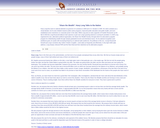
Huey Long first came to national attention as governor of Louisiana in 1928 and U.S. Senator in 1930. He ruled Louisiana as a virtual dictator, but he also initiated massive public works programs, improved public education and public health, and even established some restrictions on corporate power in the state. While Long was an early supporter of Franklin Roosevelt, by the fall of 1933 the Long-Roosevelt alliance had ruptured, in part over Long's growing interest in running for president. In 1934 Long organized his own, alternative political organization, the Share-Our-Wealth Society, through which he advocated a populist program for redistributing wealth through sharply graduated income and inheritance taxes. As his national recognition (and ambitions) grew, he spoke with increasing frequency to national radio audiences. No politician in this era--except Roosevelt himself and Long's sometime ally, Father Charles Coughlin--used radio as frequently and effectively. In this April 1935 radio address, Long sharply criticized FDR and the New Deal and then sketched out his alternative program.

Who invented the computer? Like many important technological developments, the invention of the computer cannot rightly be attributed to a single person. It is clear, however, that World War II was crucial to the emergence of the electronic digital computer. The first general-purpose electronic computer was the Electronic Numerical Integrator and Computer, the ENIAC, sponsored by the U.S. Army's Ballistics Research Laboratory at the Aberdeen Proving Ground in Maryland and developed at the the Moore School of Electrical Engineering at the University of Pennsylvania. The leaders of the project were physicist John W. Mauchly and a young electrical engineer, John Presper Eckert. In this interview, done in 1988 by David Allison and Peter Vogt for the Smithsonian Institution, Eckert described how the war provided "the opportunity"and the money to solve "engineering problems, scientific problems in general"that interested them.

This collection uses primary sources to explore social realism in American art. Digital Public Library of America Primary Source Sets are designed to help students develop their critical thinking skills and draw diverse material from libraries, archives, and museums across the United States. Each set includes an overview, ten to fifteen primary sources, links to related resources, and a teaching guide. These sets were created and reviewed by the teachers on the DPLA's Education Advisory Committee.
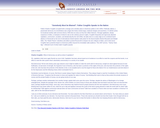
Father Charles Coughlin occupied both a strange and a familiar place in American politics in the 1930s. Politically radical, a passionate democrat, he nevertheless was a bigot who freely vented angry, irrational charges and assertions. A Catholic priest, he broadcast weekly radio sermons that by 1930 drew as many as forty-five million listeners. Strongly egalitarian, deeply suspicious of elites, a champion of what he saw as the ordinary person's rights, Coughlin frequently and vigorously attacked capitalism, communism, socialism, and dictatorship By the mid-1930s, his talks took on a nasty edge as he combined harsh attacks on Roosevelt as the tool of international Jewish bankers with praise for the fascist leaders Benito Mussolini and Adolph Hitler. The "Radio Priest's" relentless anti-elitism pushed Roosevelt to sharpen his own critiques of elites, and in that sense Coughlin had a powerful impact on American politics beyond his immediate radio audience. This 1937 sermon, "Twenty Years Ago," reflected much of what made Coughlin popular.
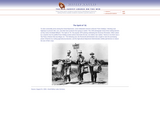
To raise commodity prices during the Great Depression, some midwestern farmers enforced Farm Holidays

In a total war like World War II, the question "Was everyone doing his or her 'part'?" inevitably arose. Immediately following Pearl Harbor, the labor movement made an "unconditional no-strike pledge" to help win the war. In turn, labor won some important concessions from the federal government. Some who believed that labor had given up too much responded with "wildcat" (unauthorized) strikes. Others moved to reconsider the no-strike pledge. In 1942 members of the Michigan CIO endorsed the no-strike pledge, but employer attacks on wages the following year caused them to reevaluate. At the 1943 annual meeting, CIO delegates debated and passed a resolution recommending that "unless the assurances that were made to labor at the time we gave up our right to strike" were honored, the pledge should be nullified. This debate provided a sense of the varying positions that workers took on this difficult issue, including the intensity of feeling that the no-strike pledge aroused.

In The Grapes of Wrath, John Steinbeck “created a literary portrait that defined an era. His account of the ‘Okie Exodus' in The Grapes of Wrath became the principal story through which America defined the experience of the Great Depression.â€Â
However, according to this New Criterion article by Keith Windschuttle, “there is now an accumulation of sufficient historical, demographic, and climatic data about the 1930s to show that almost everything about the elaborate picture created in the novel is either outright false or exaggerated beyond belief.â€Â
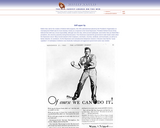
Rather than call for the creation of federal relief programs, this 1931 advertisement placed by the President's Organization on Unemployment Relief opts for local voluntary charity as a response to the Great Depression. President Herbert Hoover firmly believed that relief was a local responsibility, although even this step, which proved inadequate, went further than pre-World War I presidents, who stood by passively during financial panics. Few Americans expected the government to take drastic action when the Depression struck. Many turned instead to their employers, merchants, churches, landlords, and local banks, as well as to family networks, for assistance. As the Depression and unemployment deepened, however, it became clear that the moral capitalism" of marketplace institutions was drastically inadequate and aggressive government action was needed."

In 1939, a federal Women's Bureau survey revealed that only one in fifteen union members was female. But the same observers also noted the truism that women workers, once organized, often became tenacious and militant unionists. Unionists saw women as temporary members of the work force (as indeed most were before 1940, when the average worker was a young single woman). They mistakenly assumed that such workers would not be dedicated union members. Some saw women as unwelcome competitors for "men's jobs" and worked to keep women out of better paid union jobs rather than recruiting them to join the union. Even the United Office and Professional Workers Association (UOPWA), a progressive union that focused its efforts on clerical workers, shared some of these demeaning views of women. A regular column in the UOPWA's publication, the Ledger, featured "Susie Steno," a condescending caricature of a clerical worker as a frivolous and naive young woman, albeit one who becomes a good unionist.

Part of the New Deal's Works Progress Administration (WPA), the Federal Theatre Project (FTP) was one indication of the breadth of that program. Perhaps best known for its trenchant political satire and innovative presentations, the FTP actually represented a much broader range of activity. But the FTP's mandate proved fragile. When the House Committee on Un-American Activities was established in May 1938, one of its first targets was the FTP, which it labeled a subversive organization. When FTP director Hallie Flanagan testified before HUAC in December 1938, she fought back against these attacks. But the FTP still fell victim to the Congressional cuts.

This section contains reproducible copies of primary documents from the holdings of the National Archives of the United States, teaching activities correlated to the National History Standards and National Standards for Civics and Government and cross-curricular connections.
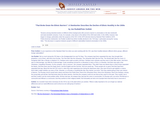
Tensions among industrial workers of different ethnic backgrounds often proved a barrier to unionization in the late nineteenth and early twentieth centuries. It was, for example, a key factor in the defeat of the 1919 steel strike. In the 1930s, however, that began to change, particularly under the auspices of the CIO. In this 1974 interview done by historian Peter Gotlieb in 1974, Polish-American steelworker Joe Rudiak recalled how ethnic hostility declined in the "CIO days," particularly among the "young folks." This decrease in suspicion between people of different nationalities fostered unionization in the 1930s.
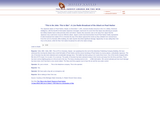
The Japanese attack on Pearl Harbor, Hawaii, on December 7, 1941, stunned virtually everyone in the U.S. military. American intelligence, with the benefit of intercepted Japanese messages, had known for some time that Japan was planning an assault, but military leaders had no idea precisely when and where. Hawaii, they assumed, was so far away from Japan that the Japanese navy could never mount an effective attack. Japan's carrier-launched bombers found Pearl Harbor totally unprepared. A radio broadcast from station KTU in Honolulu the day of the attack captured the events as they unfolded over several hours. From the roof of a Honolulu office building, the radio reporter described significant damage. Apparently, he was calling New York City on the phone, while the New York station broadcast his call to the nation at large.

In the battle for the hearts and minds of the American people during World War II, the U.S. government viewed its popular performers--singers, dancers, and actors--as a crucial weapon. Even before Pearl Harbor, Treasury Department officials began making plans to raise money to finance the war by selling bonds to the public, which would be repaid with interest after the war was over. During the war, private citizens and organizations bought $190 billion worth of war bonds at the low interest rate of 1.8 percent. Hollywood stars became central to war bond drives. The glamorous actress Dorothy Lamour alone was credited with selling $350 million in war bonds. A September 1942 "bond blitz" enlisted more than three hundred actors who worked eighteen-hour days and sold more than $800 million in bonds. As the war dragged on, the Hollywood bond salespeople continued to motivate purchases even when allied victory seemed secure. This 1945 recording by Bing Crosby exhorted people to participate in the seventh war loan.

The sudden revival of the United Mine Workers of America in 1933 was a remarkable story. In late 1932 the UMWA was practically defunct, yet by the fall of 1933 it was in the strongest position in its history. Perhaps the best historical narrative of the revival of UMWA was penned in lyrical form by an African-American former coal miner called "Uncle George" Jones. Jones had started working as a miner in 1889 at age seventeen but in 1914 blindness forced him out of the Alabama mines. Long known for his singing in church choirs, down in the mines, and on the picket line. Jones' "This Is What the Union Done" not only expressed the miners' sense of the role that Roosevelt and Lewis played in the union revival; it also beautifully captures a sense of the transformation when miners "got the union back again!"
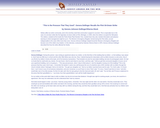
Strikes affect an entire community, and in the end they need that community's support to succeed. This is especially true in the case of a sit-down strike like the legendary sit-down strike at Flint, Michigan, in 1936, when the strikers occupied the GM plants. The strikers, isolated at first inside the Fisher Body Plant Number One, needed food; they also needed information and advance warning on what management might be up to. The Women's Emergency Brigade, formed during the Flint strike, proved indispensable to the union effort more than once. Genora Johnson Dollinger helped found the Women's Emergency Brigade and became one of the strike's key leaders. In this interview, conducted by historian Sherna Gluck in 1976, Genora Johnson Dollinger described first how the strike affected her family.